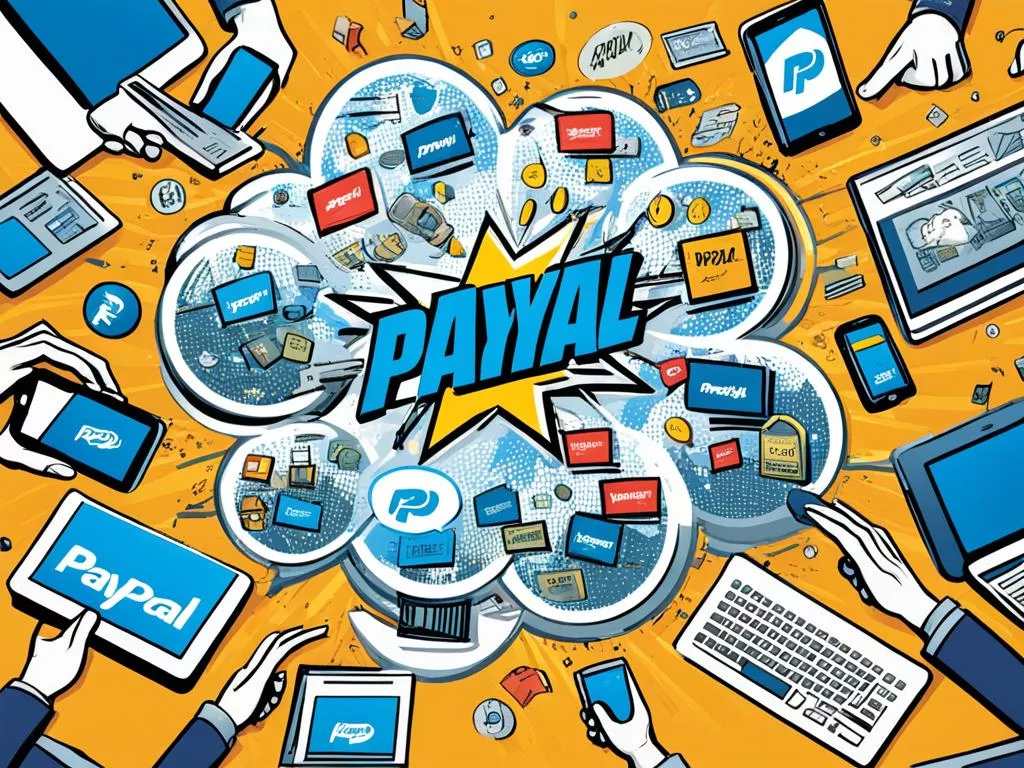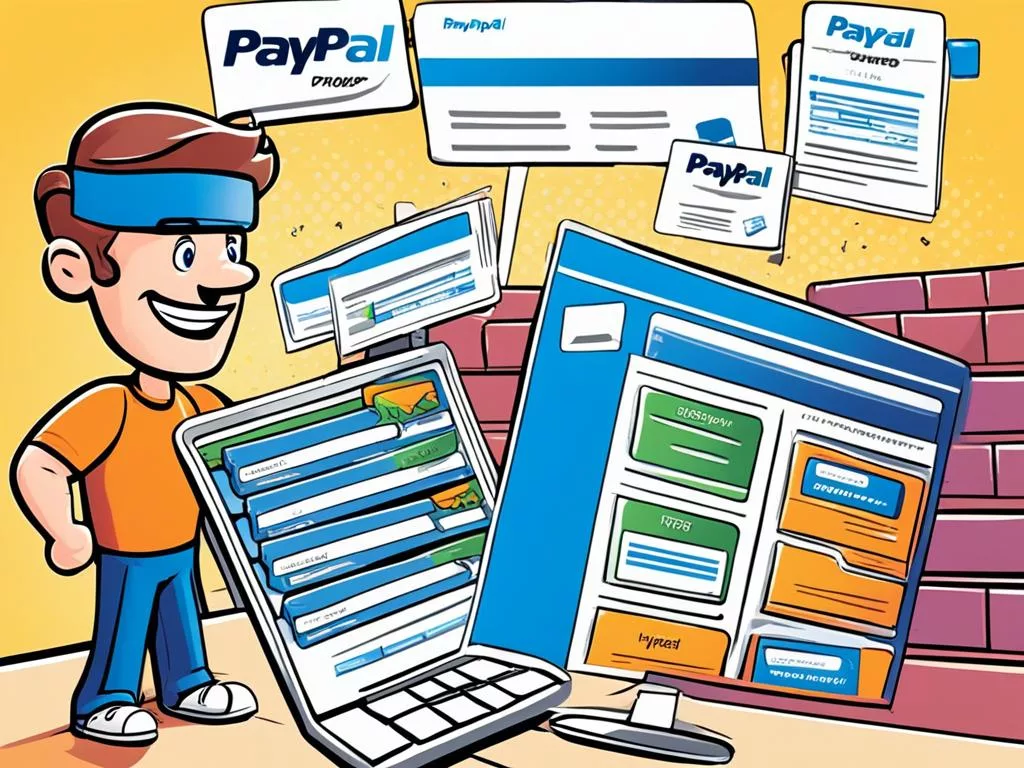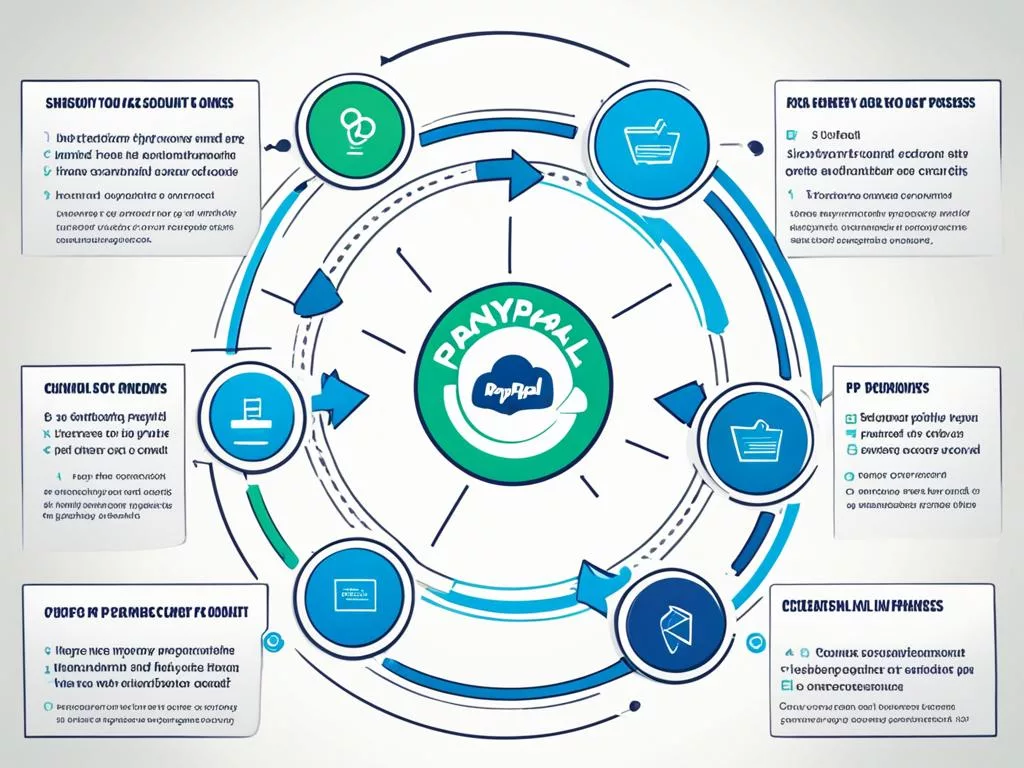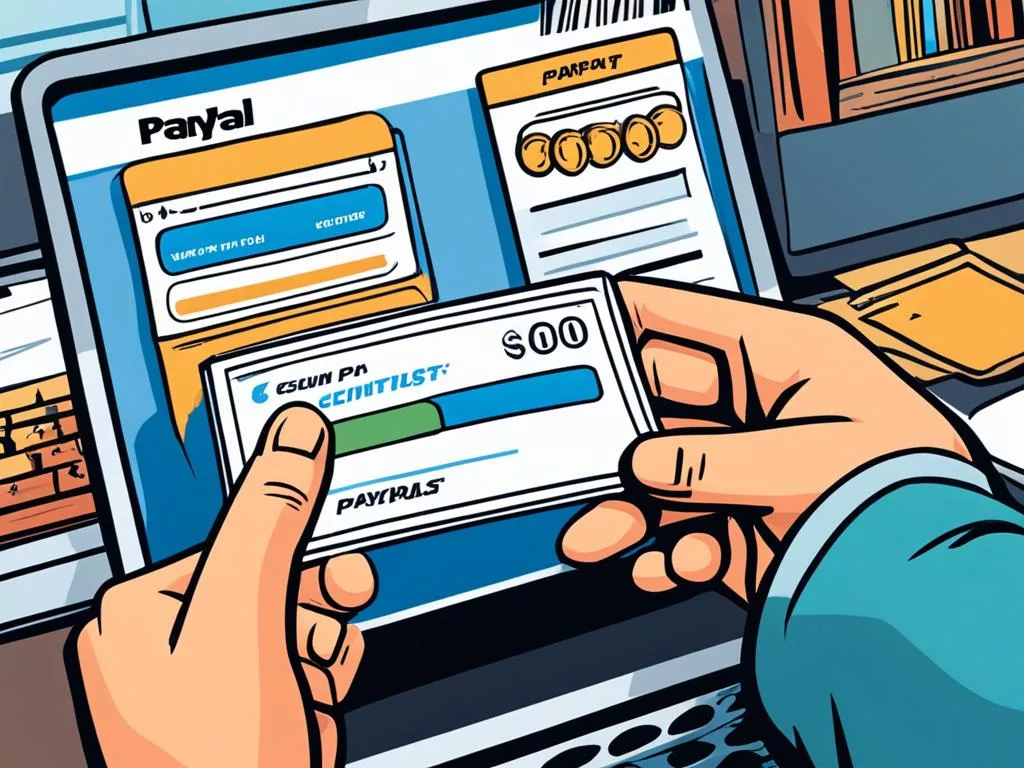In the quiet predawn hours, I find myself reflecting on how our lives are woven into the vast web of digital finance, with platforms like PayPal at the crux of our online transactions. From avid travelers settling bills in far-flung cafes to entrepreneurs receiving payments from across the globe, I’ve observed how PayPal facilitates a myriad of financial interactions with a dizzying array of currencies made available based on the user’s country1. This PayPal review is a personal journey through the ease and security that defines the service—not just an app, but a financial companion that’s evolved since its inception in the whirlwind tech era of the late ’90s2.
As seamless as it seems now, setting up my very own PayPal account was a milestone that connected me to 27,200 employees worldwide, all diligently working to provide users financial flexibility and inclusivity2. The PayPal tutorial is just the beginning; what follows is the unlocking of a payment process that redefines ease, allowing me to add my bank account within 1-2 days and choose from various payment methods tailored to my locale1.
Remembering the frustration of a credit card decline during an urgent purchase makes me appreciate PayPal’s transparency in transaction processes and its efforts to minimize such incidents1, a part of why I delve deeper into this PayPal payment process review, to give you the insights that might just turn your financial management around.
Discover the intricacies, the security features, and the innovation that have led a financial technology giant, originating in the bustling tech scene of San Jose, California, U.S., to a revenue of US$29.77 billion as of 20232. As we walk through the steps of the PayPal payment process together, it’s my hope that you’ll feel the pulse of commerce in the digital age, the same rhythm that I tap into every time I effortlessly manage my payment methods on PayPal1.
Understanding PayPal’s Role in Digital Payments
As I delve into the intricacies of PayPal’s contribution to the finance sector, it is remarkable how their journey, beginning in December 1998, has transformed them into a stalwart of digital payments, celebrating 24 years of innovation in 20232. With its grown prominence, PayPal’s 2023 financial performance speaks volumes, boasting a sizable revenue of US$29.77 billion, an operating income of US$5.028 billion, and net income amounting to US$4.246 billion2. This steady economic progression underpins PayPal’s powerful impact on both individuals and businesses alike, echoing through its substantial total assets worth US$82.17 billion and total equity at US$21.05 billion2.
PayPal’s workforce, comprising 27,200 individuals as of 2023, plays an integral role in supporting the expansive PayPal payment process, a system that caters to over 100 million active user accounts across 190 markets and handles transactions in 25 different currencies from as far back as 20102. Exemplifying the PayPal benefits, the firm processed a total payment volume of US$145 billion in 2013, which constituted a significant 40% of eBay’s revenue2. Additionally, PayPal’s commitment to inclusive growth and community support was highlighted by its $530 million pledge to aid Black-owned businesses and minority communities in the United States, back in June 20202.
The strategic moves of PayPal are evident, as in January 2021, it became the first foreign operator to fully control a payment platform in China, indicating its international prowess and forward-thinking vision2. However, challenging climates do arise, evidenced by the announcement of a 7% reduction in its workforce in February 2023, signifying 2,000 layoffs2. PayPal’s aptitude in creating a vast network is further showcased by over 35 million merchants on its platform, which facilitates a range of interactions at different stages of the shopping experience3.
PayPal’s hallmark feature of Purchase Protection for eligible purchases for consumers, coupled with a user-friendly returns process through Happy Returns, substantiates the platform’s reputation for robust PayPal security features3. Encryption of financial information during transactions ensures that security is reinforced, thereby providing businesses with peace of mind through tokenized data interactions3. PayPal’s evolution has also brought forth a focus on choice and flexibility, especially via the PayPal Digital Wallet, tailored to modern consumers’ expectations of seamless and swift payment experiences3.
PayPal’s commitment to enhancing the returns process signifies a comprehensive approach to shopping, striving for an inclusive end-to-end consumer experience that integrates all aspects of commerce3. To this end, I present insightful information through a comparative table, reflecting PayPal’s progressive arc in terms of financial stability and user engagement, all while maintaining utmost security throughout the PayPal payment process.

| Year | Total Revenue | Net Income | Total Assets | Employee Count | Active User Accounts |
|---|---|---|---|---|---|
| 2013 | – | – | – | – | $145 billion Payments Processed2 |
| 2020 | – | – | – | – | $530 million Pledged for Support2 |
| 2021 | – | – | – | – | First Foreign Operator in China2 |
| 2023 | $29.77 billion2 | $4.246 billion2 | $82.17 billion2 | 27,2002 | – |
How does PayPal Work? A Full Review Here – 2024
As I navigate the realm of online payments, I find that understanding how PayPal works is central to making informed decisions about managing digital transactions. With PayPal’s headquarters in San Jose, California, this public company has significantly influenced the financial technology industry since its inception as Confinity in December 19982. Since going public in 2002 and its subsequent acquisition by eBay for $1.5 billion in the same year, PayPal has grown to a staggering 27,200 employees and an extensive list of subsidiaries including Venmo and Xoom Corporation2. Now, let’s delve into the intricacies of the PayPal payment process and investigate some PayPal alternatives.
Understanding PayPal’s revenue—which reached US$29.77 billion in 20232—requires a look at their fee structure for various transactions. PayPal’s digital payments come with a fee of 3.49% plus 49 cents per transaction, whereas in-person payments using a QR code cost 1.90% plus 10 cents for amounts above $104. This puts PayPal in competition with other platforms, each with its own pricing models, such as Stax’s $99 per month subscription and PaySafe’s industry-low rates starting at $0.15 per batch fee4. Businesses in search of PayPal alternatives often consider these competitors when sorting through financial tech options.
For users interested in rewards and savings, PayPal offers enticing features such as a 3% cashback rate with the PayPal Cashback Mastercard and a PayPal Savings account boasting a 4.30% APY, which is significantly above the national average5. Additionally, the innovative Pay in 4 feature allows customers to manage cash flow by splitting eligible purchases into four interest-free payments5.
PayPal also demonstrates its commitment to modernization and user convenience through its app, currently at version 8.61.0, encompassing features like enhanced package tracking services and providing various financial services including PayPal Credit5. With these comprehensive offerings, PayPal strides confidently as a potent contender in the arena of digital payments, frequently updating its services and laying down the gauntlet for PayPal alternatives to match.
| Service | PayPal Fee | Stax Fee | PaySafe Fee | Finix Fee |
|---|---|---|---|---|
| Digital Payment | 3.49% + $0.49 | $99/mo + 7-15 cents + interchange rate | $0.15 batch fee + 0% Cash Discount Plans | 0% markup on interchange |
| In-Person Payment (QR Code above $10) | 1.90% + $0.10 | Not Applicable | Not Applicable | Not Applicable |
| In-Person Payment (QR Code $10 and below) | 2.4% + $0.05 | Not Applicable | Not Applicable | Not Applicable |
| Online Credit/Debit Card Payment | 2.59% + $0.49 | Not Applicable | Not Applicable | Not Applicable |
To continually serve a growing market, PayPal has not only focused on expanding its user base—which was over 100 million active accounts by 2010—but also on broadening its services portfolio through strategic acquisitions, such as iZettle for $2.2 billion in May 2018 and Honey for over $4 billion in January 20202. These moves solidify PayPal’s position not only as a dominant force in how PayPal payment processes function but also as an innovator developing PayPal alternatives within its ecosystem.

Setting Up and Navigating Your PayPal Account
Embarking on your PayPal account setup could not be easier, as it stands as a testament to user-friendliness that has garnered PayPal’s reputation for an intuitive PayPal tutorial experience. With the straightforward process, your journey embarks by choosing between a personal or business account, a decision influenced by the nature of your transactions. Filling in your valid information, including name, contact, and financial details, is the next progressive step in securing your financial frontier online.

Upon completion of these initial steps, connecting your bank and card information, is seamlessly guided by PayPal’s platform, assuring you are ready to engage in the delicate art of financial management. As soon as your data is verified, harness the power of – managing payments, sending money, or reviewing your transactions – through PayPal’s mobile application. It makes the PayPal account setup essential for anyone longing to wield their financial power from anywhere, at any time.
- Navigate to PayPal’s website or open their app.
- Select ‘Sign Up’ for a new account.
- Choose between a ‘Personal’ or ‘Business’ account.
- Provide required personal details and financial information.
- Link and verify your credit card and/or bank account.
The efficacy of PayPal is evident in its user base, spanning over 360 million active users across more than 200 countries6. As the fifth most accepted payment option after Visa, Mastercard, American Express, and Discover, PayPal has fortified its stature as a titan of transactional trust6.
Moreover, PayPal’s benevolence shines in its ‘Pay in 4’ program, allowing purchasers to distribute their payments across four equal installments over six weeks, without incurring any fees for online purchases with PayPal-accepting retailers6. Lastly, as an emblem of modern convenience mixed with a hint of fiscal responsibility, PayPal bestows upon its users the ability to link multiple credit cards to a singular account, all while preserving the opportunity to continue reaping the benefits of specific credit card rewards7.
| Transaction Type | Domestic Fee | International Fee |
|---|---|---|
| Online Purchases | 0% | 3-4% |
| Money Sent via Card | 2.9% | 5% |
| Personal Transactions | 0% (if using balance or bank account) | 5% |
| Instant Funds Transfer | 1% fee for access | N/A |
| Withdrawal via Check | $1.50 per withdrawal | N/A |
Our insightful PayPal review reveals a transparent fee structure, leaving you equipped to make informed decisions. While PayPal magnanimously does not impose fees for domestic transactions or online purchases, it does have fees aligned with a credit or debit card usage for both domestic and international transactions6. Commit to memory that instant access to transferred funds to a local account incurs a minimal 1% fee, and be mindful that a $1.50 fee applies for each withdrawal via check6.).
- No fees for online purchases with PayPal-accepting retailers.6
- Ability to point your financial compass towards international horizons with support in 25 different currencies.7
- Collaborate with over 19 million merchants worldwide who utilize PayPal for their respected businesses.7
Executing Transactions with PayPal
My exploration into the PayPal payment process reveals a robust, user-friendly system designed to facilitate a variety of financial transactions. PayPal’s evolution from its inception in December 1998 as Confinity to a public entity in 20022 reflects its commitment to streamlining the way money is sent and received. Today, whether I’m making personal purchases or handling business transactions, PayPal ensures that my financial dealings are executed with precision and security.
The company’s growth is evident in its impressive financial milestones, where in 2023, PayPal’s revenue reached an astounding US$29.77 billion2. When I initiate a transaction, the PayPal benefits shine through, as it supports my need for a seamless payment process with comprehensive buyer protection8. As a participant in the digital payment market, I value that PayPal safeguards every transaction with end-to-end encryption, ensuring the safety of my financial data8.

How does PayPal work to maintain trust among its hundreds of millions of users8? The platform employs sophisticated security measures, including browser integrity checks and two-factor authentication, which act as formidable defenses against common online threats like phishing scams8. These proactive strategies to protect accounts and personal data give me confidence in using their service.
With the recent announcement of layoffs affecting 7% of its workforce2, PayPal remains a substantial employer with 27,200 employees as of 20232. The company’s acquisitions, like the purchase of Braintree in 2014 and the notable $4 billion acquisition of Honey in 20202, enable the integration of advanced technologies into the PayPal payment process, enhancing the efficiency of transactions.
- Transaction Fees: PayPal imposes a 2.9% fee when using a credit card9.
- Transaction Costs: Before transferring $500 through PayPal using a credit card, $14.50 in fees must be considered9.
- Cash Advance Fees: Credit card issuers may levy additional fees for PayPal transactions9.
- Security: PayPal’s security measures are robust, with end-to-end encryption and two-factor authentication options8.
As an informed user, I scrutinize the total transaction cost, verifying any credit card rewards that could offset PayPal fees9. This diligence ensures that I optimize the financial benefits available to me. However, with PayPal, I rest assured that there are no hidden fees or charges. The process is transparent, which is a quality I greatly appreciate.
Overall, my journey with the PayPal payment process has been satisfactory. Understanding how PayPal works offers me insights into a world where digital transactions are conducted with the utmost care for user security and convenience — a reflection of the PayPal benefits that have made the platform a leader in the industry.
PayPal’s Fee Structure and Additional Charges
While exploring the realm of digital payments, it’s vital to understand the costs associated with platforms like PayPal. Although setting up and maintaining a PayPal account comes at no extra charge, engaging in certain transactions will incur fees that vary depending on the nature of the transfer. When sending money with a card through PayPal, users are subject to a fee of 2.90% plus a fixed sum10, and international transfers with PayPal demand a fee of 5% with a minimum and maximum cap10. Moving toward the seamless service of instant transfers, funds can appear in your bank account within moments, although this attracts a 1.75% fee of the transferred amount10. Additionally, PayPal upholds competitive transaction limits, allowing verified accounts to send up to $60,000 in a single transfer10.
Comparing PayPal’s fee structure reveals similarities with competitors like Square, which also levies charges on transactions, yet presents the first card reader without a cost, a stark contrast to PayPal’s pricing strategy for additional devices4. On the other end of the spectrum lies Stax by Fattmerchant, which deviates from these transaction-based fees in favor of a monthly subscription, starting with a commitment of $994. Although PayPal aligns with common industry practices by imposing chargeback fees of $20 and not offering refunds on transaction fees for returns4, it remains a staple choice due to features such as its Seller Protection Program.
In my analysis, adopting PayPal brings manifold PayPal benefits in terms of its comprehensive suite that caters to varied financial needs, from interest-free Pay in 4 feature for consumers to PayPal Checkout for businesses, each carrying distinct costs like the 3.49% plus a fixed fee on standard credit and debit card payments11. While weighing PayPal alternatives, it is imperative for users and merchants alike to scrutinize these fees in relation to their transaction frequency and volume, which might tilt the scales in favor of a subscription model, as offered by Stax, especially for those with an elevated number of monthly transactions4.
Source Links
- https://www.airbnb.com/help/article/486
- https://en.wikipedia.org/wiki/PayPal
- https://newsroom.paypal-corp.com/2022-10-27-A-Peek-Inside-PayPals-Two-Sided-Network-of-Consumers-and-Businesses
- https://www.forbes.com/advisor/business/software/paypal-review/
- https://apps.apple.com/us/app/paypal-send-shop-manage/id283646709
- https://www.bankrate.com/finance/credit-cards/guide-to-using-paypal/
- https://www.jotform.com/how-does-paypal-work/
- https://www.security.org/digital-safety/is-paypal-safe/
- https://www.usatoday.com/money/blueprint/banking/credit-card-to-send-money-on-paypal/
- https://time.com/personal-finance/article/paypal-review/
- https://www.paypal.com/us/webapps/mpp/merchant-fees

